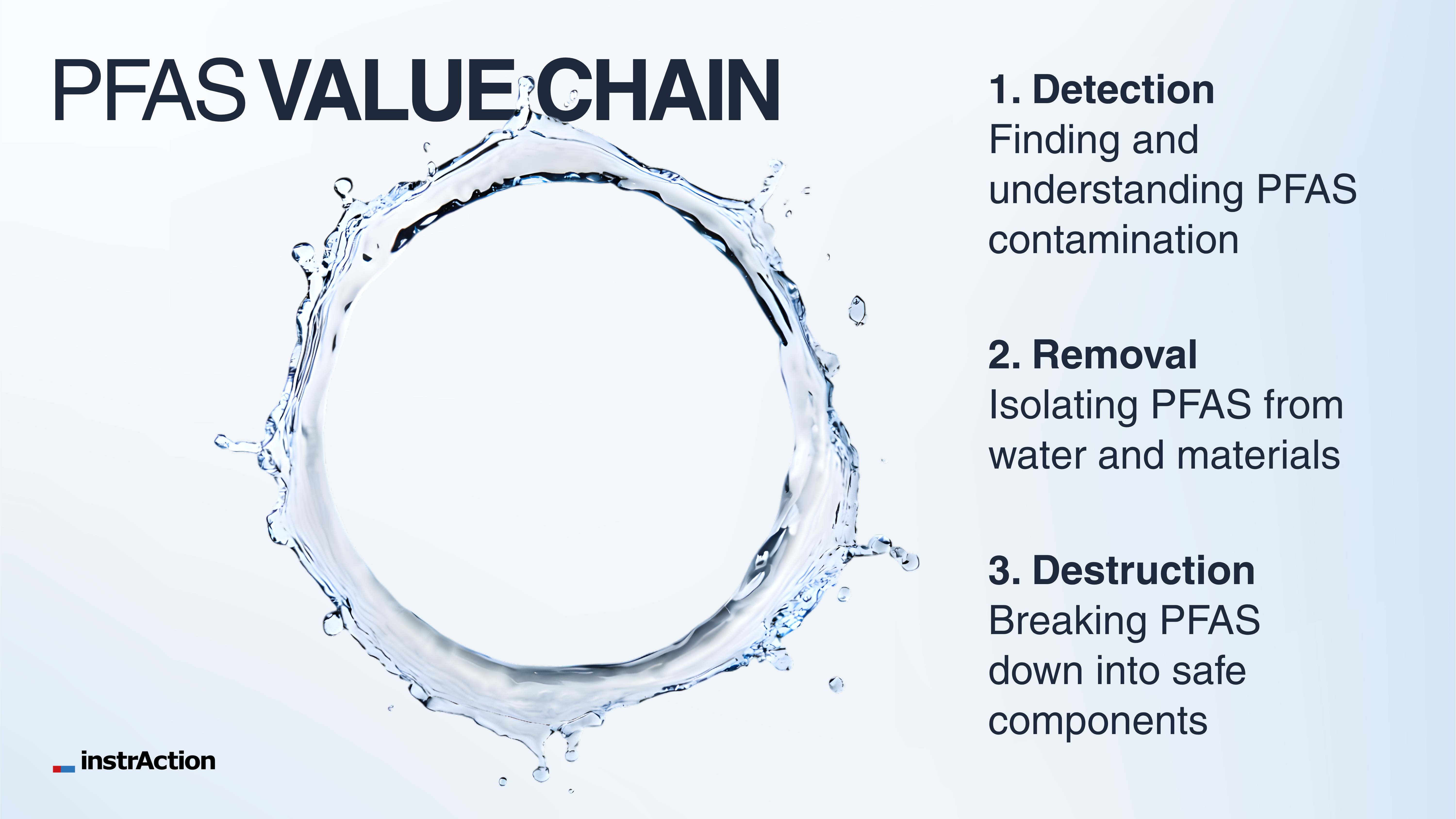PFAS from Firefighting Foams
The Lifecycle Explained all the way from challenge to clean water
PFAS are everywhere. In water, soil, even in the air we breathe. They don’t just disappear, and, as you probably have guessed from the title, managing them takes more than a single fix.
To understand how to deal with PFAS safely and sustainably, let’s take a look at the full lifecycle.
In a nutshell
PFAS are often called forever chemicals because they don’t break down easily.
To manage them safely, three main steps are needed:
- Detection: find where PFAS exist and how much is present
- Removal: capture and contain PFAS from water and waste streams
- Destruction: break them down into harmless compounds
1. Detection & Monitoring
Before any cleanup begins, you need to understand what you’re facing. PFAS can appear in water, soil, air, sludge, and even finished products.
Modern detection involves:
- Sampling & site investigation
- Advanced lab analysis (LC-MS/MS, TOF, TOP assays, non-target screening)
- Data-driven risk assessment to map PFAS plumes and guide cleanup
Output: clear data for decision-making.
2. Capture & Removal
Once contamination is identified, the focus shifts to containment. Traditional methods like granular activated carbon (GAC) or ion exchange resins can capture PFAS, but often struggle with short-chain compounds or harsh matrices.
instrAction’s absorber technology takes this further:
- High selectivity for both long- and short-chain PFAS
- Chemical and physical stability
- Regenerable performance for lower lifecycle costs
3. Destruction & Mineralization
We’ve captured the PFAS. Now what’s next?
To prevent recontamination, those concentrated residues must be broken down into harmless compounds.
Emerging technologies, from supercritical water oxidation to electrochemical destruction, are pushing this field forward. instrAction collaborates with research partners to connect removal with safe, permanent disposal.

4. Supporting Layers
Beyond the actual steps PFAS go through, there’s more to consider. A complete PFAS lifecycle depends on more than chemistry:
- Regulation: sets discharge limits and cleanup standards
- Logistics: ensures safe transport and waste management
- Technology providers: labs, OEMs, and consultants drive deployment
The Bigger Picture
Wondering how all of this can work sustainably? The answer lies in integration. Detection, removal, and destruction are often treated as separate markets, but in reality, they’re one continuous chain.
At instrAction, we connect all of these stages through advanced absorber technology and collaborative R&D, creating solutions that close the loop for good.
PFAS management is evolving fast. The real progress will come from integration, not isolation. And that’s exactly where instrAction makes the difference: linking science and engineering to turn complex PFAS challenges into cleaner water, step by step.
Learn more about instrAction and the next generation of water filtration
Frequently Asked Questions
What are PFAS?
PFAS (per- and polyfluoroalkyl substances) are a large group of synthetic chemicals used to make materials resistant to water, heat, and stains. They’re extremely stable, which makes them useful in industry, but also persistent in the environment. That’s why they’re often called forever chemicals. Find more information on our recent blog post.
Why are PFAS dangerous?
Because they don’t break down easily, PFAS can build up in water, soil, and even in the human body. Long-term exposure has been under suspicion of being linked to serious health risks. Managing PFAS safely means detecting, capturing, and destroying them completely, not just containing them. Find more information on our recent blog post.
More Information:
- U.S. Environmental Protection Agency (EPA) — “PFAS Explained” page: https://www.epa.gov/pfas/pfas-explained Umweltschutzbehörde
- EPA — PFAS overview and regulation info: https://www.epa.gov/pfas Umweltschutzbehörde
- European Chemicals Agency (ECHA) — PFAS topic page: https://echa.europa.eu/hot-topics/perfluoroalkyl-chemicals-pfas echa.europa.eu
- Organisation for Economic Co‑operation and Development (OECD) — PFAS policy & risk reduction page: https://www.oecd.org/en/topics/sub-issues/risk-management-risk-reduction-and-sustainable-chemistry/per-and-poly-fluorinated-chemicals.html OECD
- EPA — Research & methods to detect and measure PFAS: https://www.epa.gov/chemical-research/research-and-polyfluoroalkyl-substances-pfas Umweltschutzbehörde
Oct 21, 2025



.png?width=500&height=500&name=Beige%20Grau%20Typografisch%20Einfach%20Minimalistisch%20Collage%20Daily%20Vlog%20Youtube%20Thumbnail%20(2).png)